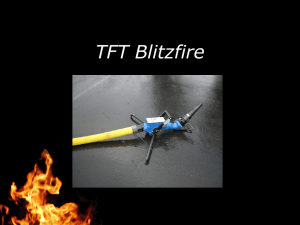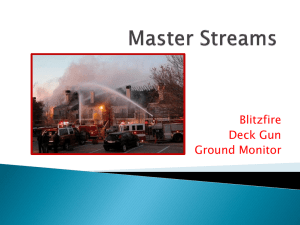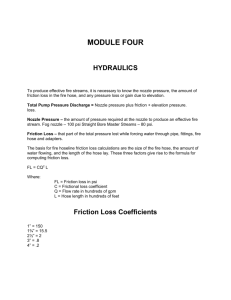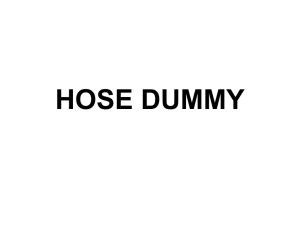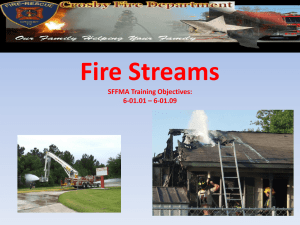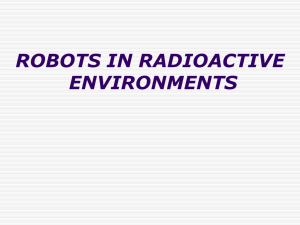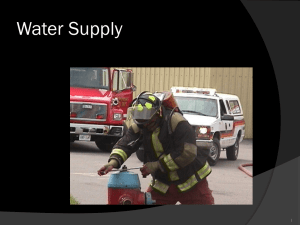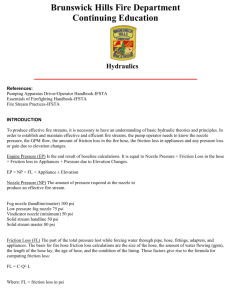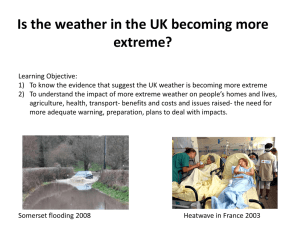Objectives:
advertisement
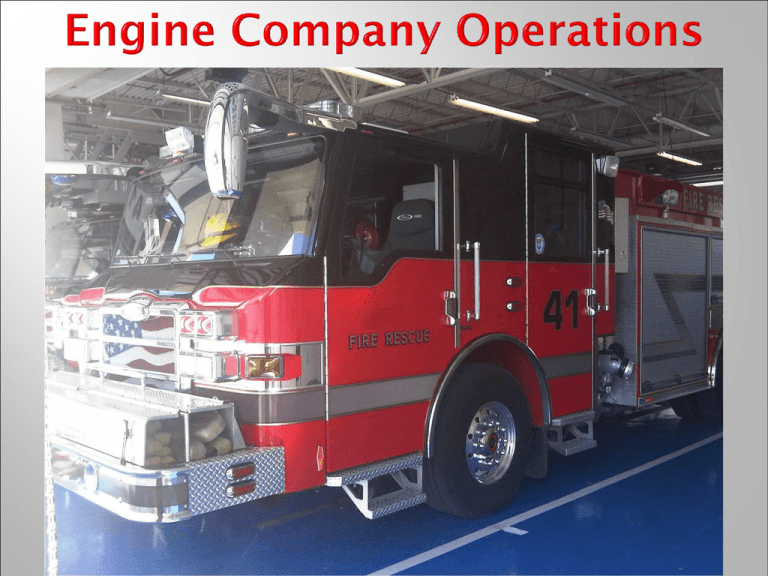
•The size up •360 •Tools and equipment •Fire hose selection •Fire streams and nozzles •Fire control •It begins when the tones go off: Time of day, address, etc. •Catch 3 sides, building size, layout, cars in the driveway, smoke/fire conditions. •Make the routine jobs, such as pulling a handline, second nature so you can direct your attention to what’s going on with the fire building. •Radio, right TAC channel? •Flashlight: it will be dark inside, even in the day time. •T.I.C. – I hope the driver checked the batteries. •Axe/halligan: to get in, and to get out. •Pike pole/truck hook: you will end up pulling ceiling. •Paint a picture for the DC. •Hazards: pools, dogs, power drop, propane tanks, clues on the building’s contents, FIREFIGHTER EGRESS ! •Fire conditions: involvement, location, where’s it going, use the imager, where are we going to enter? •Location of utilities. •Is quick ventilation possible to the fire room? 1 ¾” – attack hose 2 ½” – offensive / defensive attack • courtyard lays 3” – supply line • dumping the tank • highrise pack • FDC for standpipe and sprinklers 5” – supply line • relay pumping • FDC for standpipe and sprinklers • master streams 6” – capacity hookup •Typically the 1 ¾” with a fog nozzle at 125 GPM •150 gpm is the national standard for minimum acceptable handline flow for residential fires. •250 gpm is the national standard for minimum acceptable handline flow for commercial occupancies. •The fire dictates the size of the hoseline. •Think about GPM vs. BTU’s, is the fire load the same as it was 40 years ago? •One pound of ordinary combustibles gives off 8,000 BTUs when burned. •One pound of plastics gives off 16,000 BTUs when burned. •As the first line goes, so does the fire ! •How much hose will you need to get to the fire building? •How much hose will you need once you’re in the fire building, did you catch 3 sides? •For multiple floors add at least one section of hose per floor. •Preplanning for courtyard and extended lays. 1 Gallon of water is 8.35 lbs Per 100' Volume Weight 1 3/4” 13.9 gallons 104 lbs 2 ½” 29.2 gallons 213 lbs 3” 42.1 gallons 306 lbs 5” 116.9 gallons 849 lbs •The driver is generally in charge of the first 50’ •The nozzle man is typically in charge of the rest. •Start flaking the hose you will need inside at the front door. •Bleed the line, check your pattern, check your pressure. •EVERYONE check for kinks – never walk past a kinked hose! •You will not see fire on every fire call ! •If your not the nozzle man, if your not the lieutenant, you should be advancing hose! •Hose management is one of the most important and one of the most forgotten functions on the fire ground! Good communication between all the members on the attack team is imperative for smooth hose advancement. •Reach •Penetration •Less thermal layer disruption •Less nozzle reaction •Limited foam capabilities •Poor hydraulic ventilation •The first United States patent for a fog nozzle was granted to Dr. John Oyston in 1863. •In the mid-1930s, Elkhart Brass introduced the first production periphery jet fog nozzle to the American fire service known as the "Mystery" nozzle. •Despite their long history, fog nozzles were virtually unknown through the first half of the 20th century and then came Mr. Lloyd Layman . •Lloyd Layman was a chief in Parkersburg, West Virginia and also in charge of the Coast Guard's wartime firefighting school at Fort McHenry in Baltimore, Maryland. •In 1950 Chief Layman presented a paper entitled "Little Drops of Water" at the FDIC in Memphis, Tennessee which introduced what he termed the indirect method of attack to suppress interior building fires which used large amounts of steam for extinguishment. •Most of the theory and methodology of indirect fire attack was based on his Coast Guard experiments and the February 1945 issue of Fire Engineering entitled "Coast Guard Conducts Tests on Ship Engine Room Fires“. •Laymen stated, "An indirect attack should always be made from positions that will enable personnel to avoid injuries from super-heated smoke and live steam.” Layman continued by stating that "if possible and practical, an indirect attack should be made from positions outside the involved building by directing fog stream through window openings”. He discouraged the use of doorways for fog application because the outflow of scalding steam would be extremely debilitating to the nozzleman. •In the 1960s and 1970s improvements in firefighter protective clothing and SCBA allowed fireman to make interior attacks and the indirect attack method went inside with them. Fog should only be used in a straight stream pattern inside. 125 GPM 150 GPM 175 GPM 200 GPM 250 GPM 300 GPM Nozzle Reaction fog nozzle = 63 lbs fog nozzle = 76 lbs fog nozzle = 88 lbs fog nozzle = 101 lbs solid bore = 66 lbs fog nozzle = 126 lbs solid bore = 95 lbs solid bore = 117 lbs - A 15/16-inch solidbore nozzle flowing 180 gpm moves approximately 510 cfm of air. - A typical 1 3/4-inch nozzle on a fog setting flowing 150 to 180 gpm will move 6,000 to 10,000 cfm of air. - LFR's 24" electric PPV fan on S38 moves 10,500 cfm of air. The Indirect attack •Water converts to steam at 1,700 : 1 at 212 degrees Fahrenheit. •Water converts to steam at 4,000 : 1 at 1,000 degrees Fahrenheit. •Example: 10 X 10 X 8 (800 cubic foot) bedroom on fire. •Wide fog at 125 GPM into the ceiling for 10 seconds. •20.83 Gallons X 1,700 = 35,411 gallons of steam •1 gallon= is approximately 0.13368 cubic feet. •35,411 gallons = 4,733 cubic feet of steam The direct attack •Applying water directly to the fuel/fire interface. •Stay low and let it blow. •Put the genie back in the bottle. •Use as little water as possible , “pencil” technique. •Strive for minimal thermal layer disruption. • • • • • • Pre-arrival information - what building are we responding to, warehouse or mobile home? Size up the building and read the smoke, what size and how much hose will you need to get the job done? – As the first line goes… Did you bring a halligan, axe, pike pole, truck hook, flashlight, radio, T.I.C.? Did you stack enough hose at the door while the officer is doing a 360, check the nozzle pattern, GPM setting, ensure proper pressure? Force the door, stay low let it blow, knock the fire back – don’t cause fireman soup, advance until you find the seat of the fire and extinguish it. Open the ceiling and walls checking for extension, preserve evidence for determination.
